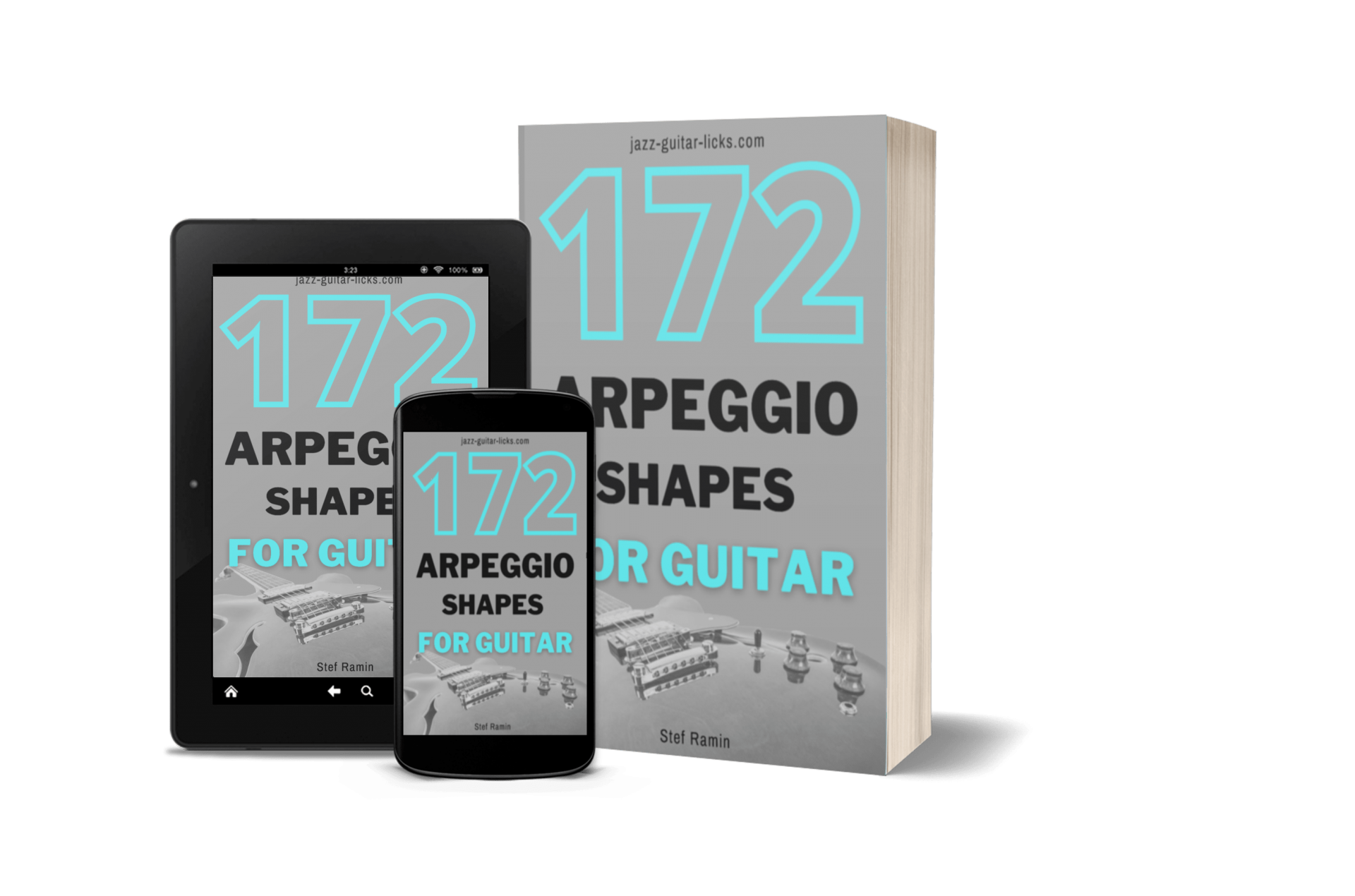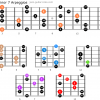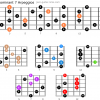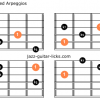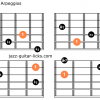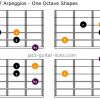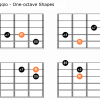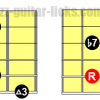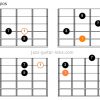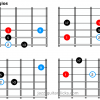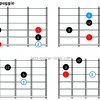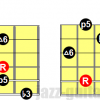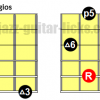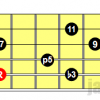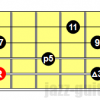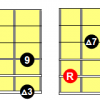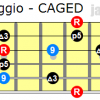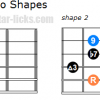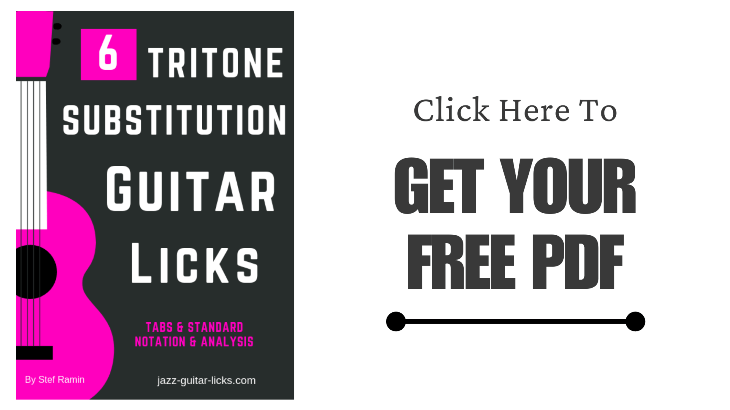Arpeggios
An arpeggio is a musical technique where the notes of a chord are played in succession, rather than simultaneously.
Instead of playing all the notes of a chord at once, you play them one after the other, usually from the lowest to the highest or vice versa.
Arpeggios are widely used by many guitarists in all styles of music to build clear, fluid and effective lines.
You will find in the following pages below many free lessons providing useful information about the main types of arpeggios used in jazz music.
The main types of arpeggios are built with four notes :
Root (1).
Third, wich can be minor (b3) or major (3).
Perfect fifth (5), diminished (b5) or augmented (#5).
Major seventh (7), minor seventh (b7) or diminished seventh (bb7).
Thus giving different types of arpeggios such as :
Major 7 (1 3 5 7)
Minor 7 (1 b3 5 b7)
Dominant 7 (1 3 5 b7)
Half-dminished (1 b3 b5 b7)
Diminished (1 b3 b5 bb7)
Augmented 7 (1 3 #5 b7)
Major 7#5 (1 3 #5 7)
Minor / Major 7 (1 b3 5 7)
These arpeggios can be extended with supplementary notes above the octave as ninth, eleventh and thirteenth.
Arpeggios can be classified into several families :
Triad Arpeggios (made of three notes) as maj, min, aug, sus4, sus2, and diminished.
Tetrads or four-note arpeggios (made of four notes) as maj7, min7, dom7, m7b5, dim7, maj6, min6, minMaj7, maj7#5, aug7, 7sus4, 7sus2.
Five-note arpeggios as min9, dom9, maj9.
Six-notes arpeggios as min1, dom11, maj11.
Seven-notes arpeggios as min13, maj13, dom13
Click on the links below to access free lessons with tabs, shapes, practice tips and get more details on how to practice arpeggios on guitar.
-
Major Seventh Arpeggios (Maj7) | Guitar Diagrams, Theory and Licks
This jazz guitar lesson is about maj7 arpeggios guitar patterns with diagrams, fingerings and theory. Related scales and chords charts included. -
Minor Seventh Arpeggios (min7) | Guitar Lesson With Licks And Charts
You will find here some neck diagrams, formula charts and exercises for practicing minor seventh arpeggios on guitar. -
Dominant 7th Arpeggios (Dom 7) | Guitar Lesson with Patterns and Shapes
Dominant 7 Arpeggios are the most important tool to master when improvising. This lesson explains how to play them on guitar using shapes and formula charts. -
Half-Diminished Arpeggios (m7b5) | Guitar Lesson with Shapes And Charts
This lesson is about half diminished arpeggios also called m7b5 arpeggios. You will find in this page useful information with Tabs, charts and licks. -
Diminished Seventh Arpeggios (Dim7) | Guitar Lesson with Shapes, Fingerings and Licks
This lesson includes guitar patterns and neck diagrams about diminished seventh arpeggios. -
Minor Major Seventh (minMaj7) Guitar Arpeggios
What's a minor major seventh arpeggio (minMaj7). This lesson explains how is it built and how to use it using guitar neck diagrams, scale charts and licks. -
Augmented Major 7 Arpeggios (Maj7#5)
This guitar lesson is about maj7#5 arpeggios. How to play them all over the neck using CAGED charts and octave shapes. -
Augmented 7 Arpeggios - Guitar Lesson
How to play augmented 7 arpeggios on guitar. Lesson with diagrams and charts. -
Major 9th Arpeggios - Lesson with Guitar Diagrams
This lesson teaches you how to play major 9th arpeggios on guitar. Theory, formula charts, neck diagrams and jazz lines. -
Minor 9th Arpeggios - Guitar Diagrams and Theory
How to play minor 9 arpeggios on the guitar. Free lesson with diagrams, charts and jazz lines. -
Dominant 9th Arpeggios - Guitar Diagrams, Charts and Licks
This jazz lesson with diagrams, licks and charts show you how to play dominant 9 arpeggios on guitar and how they are built. -
Minor 6 Arpeggios - Guitar Positions with Theory
This lesson provides information on how to play minor 6 arpeggios on guitar. You will learn how to form them and understand their connections to the modes. -
Major 6 Arpeggios - Lesson With Theory and Guitar Diagrams
This lesson about major 6 arpeggios provides diagrams and charts. -
Minor 11th Arpeggios - Lesson With Diagrams and Theory
This lesson contains neck diagrams and formula charts. It explains what are minor 11 arpeggios and how to play them on guitar. -
Dominant 11 Arpeggios - Lesson With Diagrams
This lesson with guitar neck diagrams and charts explains how to extend a dominant 7 arpeggio with 9 and 11 in order to get a dominant 11 arpeggio. -
Major 13th Arpeggios - Extension and Superimposition
How to play major 13 arpeggios. How are they built. Lesson with theory, diagrams and fingerings. -
Major add9 Arpeggios - Lesson With Guitar Diagrams
This guitar lesson with diagrams and formula charts is focused on how to build and play major add9 arpeggios. -
Dominant 13th Arpeggios - Guitar Shapes and Exercises
This guitar lesson is about dominant 13 arpeggios. Neck diagrams, formula charts and exercises.

